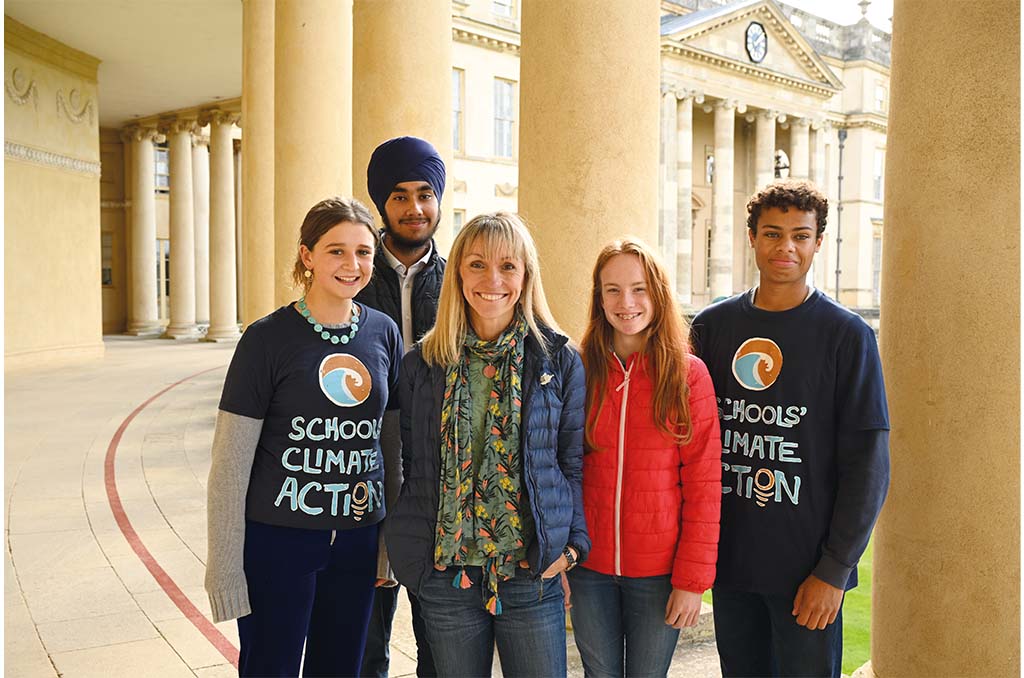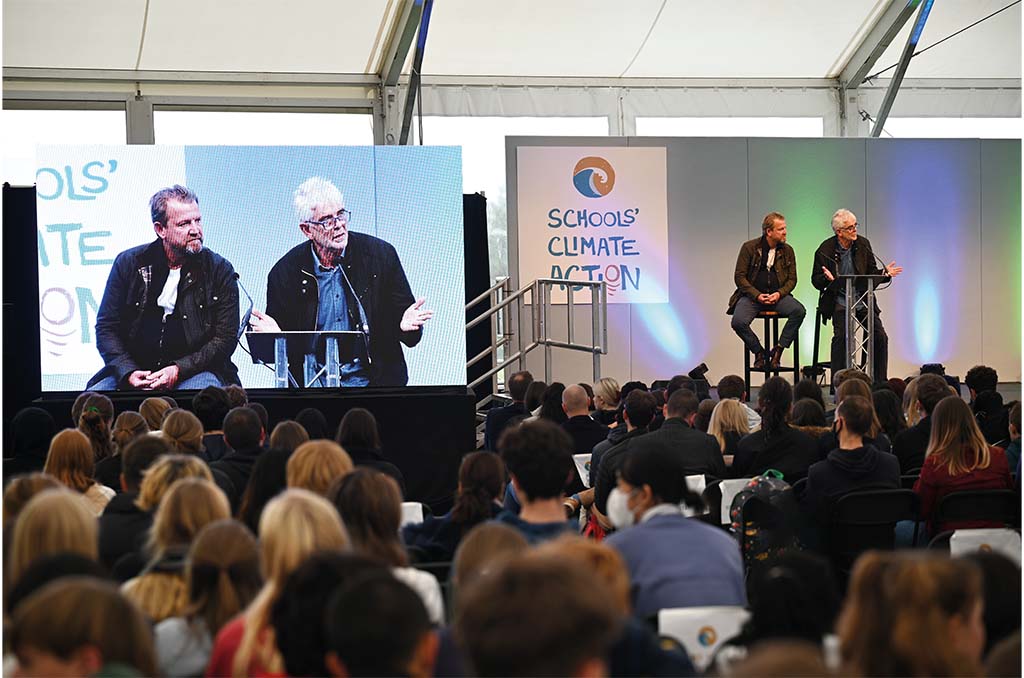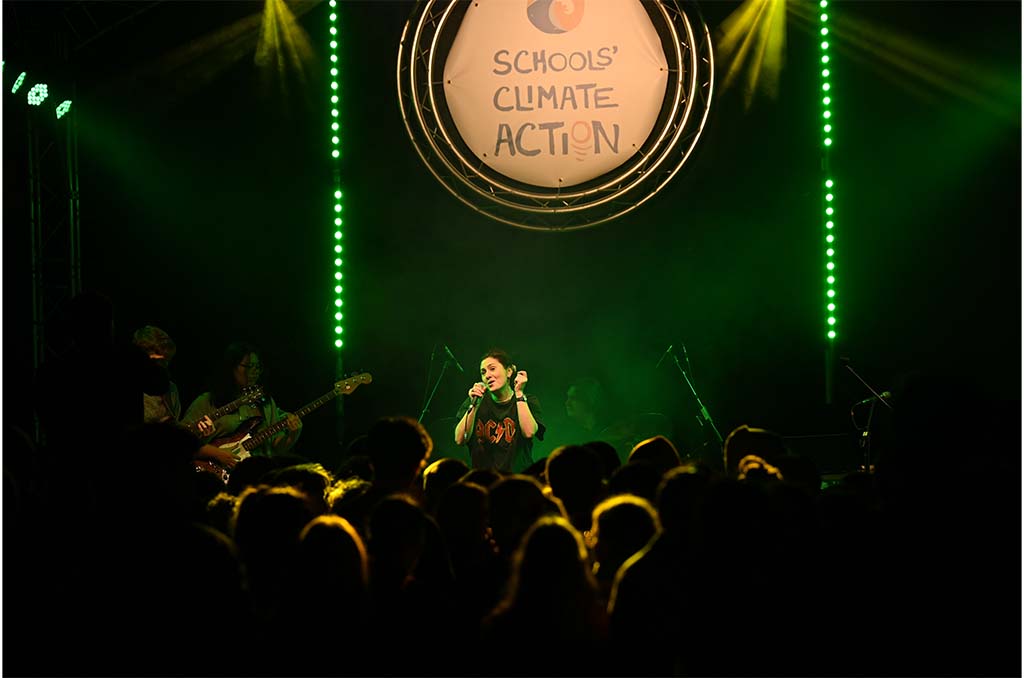
- HOME
- EDUCATION
Nature Blooms at Stowe
By | 2 years ago
History, landscape and enthusiastic students power Stowe School’s approach to sustainability, finds Thea Jourdan

The magnificent ducal palace that makes up the main building of Stowe School in Buckinghamshire is an 18th-century Neoclassical and Palladian masterpiece – and not an obvious example of sustainability. But most of the materials used to build it were natural products sourced locally.
Now undergoing a major restoration, the same principles hold true today. ‘We used English green oak for the roof and locally quarried Helmdon limestone for the façade,’ explains Dr Anthony Wallersteiner, headmaster since 2003.
‘Where we can’t replace like with like – for example, high-quality English oak was not available for new floorboards in the Temple Room – we are only using sustainable suppliers, who plant trees to replace the ones they have harvested.’ A quarry near Finmere was re-opened for sand to match the stucco on the colonnades.
New buildings on the school site are designed with sustainability at the fore – the Design, Technology and Engineering Centre will open during the school’s centenary in 2023 and promises to be the school’s most eco-friendly building with a thermally efficient envelope in order to minimise heating requirements.
Water for the school still comes from the springs and wells which used to serve the estate. Dr Wallersteiner hopes to turn the old water mill into a hydroelectric generator, reducing the school’s dependency on electricity from the grid. While that project remains a future possibility, he has already instructed the management team to switch the school to a supplier that only uses renewable energy.
‘It’s an easy thing to do, along with asking children to wear appropriate clothing for the weather. So many people simply turn up the thermostat rather than putting on another jumper,’ he says pointing out that he is sitting in his south-facing office in a woolly jumper with the windows ajar to let in the fresh air.
The pupils at Stowe are helping to drive the changes which will ensure that Stowe is carbon neutral by 2040. It’s already doing well. The average carbon footprint figure (the measure of all greenhouse gas emissions rolled into one) used to be 6.1 tonnes per pupil per year in 2003 and that has dropped to 3.1 tonnes per pupil per year today.

Last October, just before the UN Climate Change Conference (COP26) was held in Glasgow, Stowe hosted a Schools’ Climate Action conference, with more than 1,500 delegates representing 40 different schools from the private and state sector. At the end of the event, which included presentations by Michaela Strachan, presenter of BBC Two’s Springwatch, and the director of Greenpeace, John Sauven, all pupils and teachers at Stowe were asked to come up with simple ideas to reduce their carbon footprint.
‘One student pointed out that when she went round the classrooms at night,’ recalls Dr Wallersteiner, ‘she was bathed in the warm glow of computers left on standby. We all do it – but it saves a lot of energy if you unplug a device at the wall when you aren’t using it.’
Another suggested changing tungsten lightbulbs, when they blew, to low-energy LEDs.
Both suggestions have been taken up, along with changes to catering which puts the emphasis on locally sourced food in its correct season. ‘We have built up relationships with local famers and suppliers and have a great butcher. You won’t find mangetout or strawberries on the menu in winter,’ says Dr Wallersteiner. ‘But expect lots of crumbles and strudels. along with vegan and vegetarian options.’ Labels on the dishes show the pupils where the food came from and how it was produced, to ensure the process was ethical.

Nearly all the maintenance staff vehicles are now electric with charging points and the iconic Stowe Routemaster bus is being replaced by two electric buses to transport pupils to the sports fields.
Water and energy usage will be measured in each house with incentives to reduce consumption. ‘We’ve gamified it and added a competitive element,’ explains Dr Wallersteiner, who says that the groundswell of change is coming from below as the younger generation take up the cause of climate change. The school is also recycling nearly all its waste, with the help of an outside contractor.
‘By making small, micro changes to our lifestyle, the impact can be quite significant,’ says Dr Wallersteiner. ‘At the end of the day, people in the 18th century were able to live harmoniously within their landscape with the resources they had. That’s what we need to relearn – how to live in the landscape in a sustainable way.’
READ MORE FROM SPRING SUMMER 2022
Heads of School: Sherborne | Senior Head View: Re-Setting Exams



